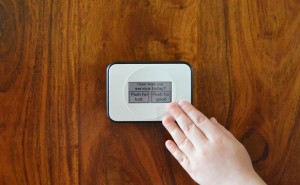SW tech drives Amazon’s Internet of Things operating system for billions of devices
Amazon has tapped SouthWest technology for the embedded software to control billions of devices in the Internet of Things (IoT).
The company has launched its own version of the world’s most popular embedded operating system, FreeRTOS, developed in Bristol by Richard Barry who worked for Wittenstein High Integrity Systems (WHIS).
Last year Barry joined Amazon as a principal engineer and, as a result, the FreeRTOS kernel version 10 is now under the MIT licence – allowing it to be used freely (instead of its previous and more restrictive GPLv2 licence).
Simplified licensing has long been requested by the FreeRTOS community and the choice of the MIT licence was based on the needs of the embedded systems community. Open source Amazon has also developed its own version, Amazon FreeRTOS, which is based on the FreeRTOS kernel and adds support for Amazon Web Service (AWS) and IoT use cases. This includes software libraries that make it easy to securely connect devices to the cloud and on a local network. This works on boards developed by STMicroelectronics which also had a large embedded technology centre in the region for many years.
You can find out much more at Amazon taps Bristol tech for Internet of Things operating system -TechSPARK.co
Bath startup launches IoT system for commercial buildings
Bath-based ContinuumBridge has launched an intelligent, connected IoT device called Spur.
This is aimed at service providers in the facilities management, retail, leisure and hospitality industries to provide an intelligent, easy-to-use means for service users to initiate a request or report an issue and provides the user with an immediate acknowledgement.
 The physical part of Spur is a call button that integrates a display whose message indicates to the user what they are able to request/report and then provides instant visual feedback confirming the outcome. For example, if installed by a coffee machine the display could say, “Push here if this machine requires more coffee” and then after pressing the button the display could change to say, “More coffee for this machine has been requested”. Similar scenarios can be applied in other situations, such as reporting that a printer or photocopier is out of toner, or that a toilet needs cleaning. Multiple call options are possible by cycling the e-ink display, for example, requesting waiter service or asking for the bill in a restaurant, and perhaps subsequently rating the customer experience.
The physical part of Spur is a call button that integrates a display whose message indicates to the user what they are able to request/report and then provides instant visual feedback confirming the outcome. For example, if installed by a coffee machine the display could say, “Push here if this machine requires more coffee” and then after pressing the button the display could change to say, “More coffee for this machine has been requested”. Similar scenarios can be applied in other situations, such as reporting that a printer or photocopier is out of toner, or that a toilet needs cleaning. Multiple call options are possible by cycling the e-ink display, for example, requesting waiter service or asking for the bill in a restaurant, and perhaps subsequently rating the customer experience.

“During Spur’s development we worked closely with our customers and are confident that it meets genuine needs. The capability that lies behind the button provides numerous benefits for both the service provider and end‑user or customer,” said Peter Claydon, CEO of ContinuumBridge. “
The technology uses 868MHz wireless for low power connections, allowing a battery life of up to 5 years. A gateway bridge, which only requires a power outlet, provides connectivity between the wireless buttons and a server using a cellular modem so there is no need for network connection. Service providers access the server through a fully programmable but easy to use web portal using the Wisp technology developed by ContinuumBridge. This provides comprehensive reporting that is available through the web site or via email, SMS or data-sharing with a third party database. The whole Spur solution is safe-guarded with state-of-the-art, end-to-end security.
“We were trying various wireless technologies such as Z wave, Zigbee and WiFi for the battery life and the range of the radio,” said Claydon. “A mesh is OK if you have lots of them but try telling an installer that. So we worked backwards from those requirements. The e-ink display is great for low power, so we’ve uses a standard 868MHz radio with our own lightweight protocol so that you only turn the radio on when someone presses the button and once an hour to check for updates. At 10 pushes a day that gives us a 5 year battery life and 300m line of sight connection or three floors of an office building from the 868MHz radio,” he said.
“The gateway is the same bridge that we have already developed which is a Raspberry Pi at heart with the 868MHz radio and a 3G cellular modem so you don’t have to get into someone’s IT infrastructure and the bandwidth required is so low,” he added.
Spur is undergoing trials now in the UK and volume production will commence in mid-2016. ContinuumBridge is looking for distribution partners throughout Europe with North American and other geographies anticipated in the future.
Related articles
Zeeta Networks raises £1.25m to commercialise its IoT operating system
Bristol startup Zeetta Networks has raised £1.25m to commercialise its software-defined networking technology to smart enterprises and Internet of Things (IoT).
The company, a spin-out from the University of Bristol’s High Performance Networks group, is an internationally renowned team for their expertise in software-defined networking and network virtualization, focusing on the design, development and marketing of open networking solutions.
Zeetta has developed a unique open networking platform called netOS based on industry-standard hardware and powerful orchestration software which manages, automates and monitors the whole network while significantly reduces its costs. This offers a “USB-like”, plug-n-play management of different types of connected network devices and enables the construction of virtual “network slices”, for example separate logically-isolated sub-networks for the deployment of business-to-business or business-to-consumer services, such as Ultra HD wireless video distribution, city-wide Wi-Fi, IoT and other applications. This is being used for the Bristol is Open network across the city.
The funding, which is being provided by existing investor IP Group and new investor, Breed Reply, means that Zeetta can significantly accelerate its growth plans. This will enable the company to expand its commercial and technical teams and target new markets.
Zeetta Networks has been a virtual member of the Bristol SETsquared Centre since September 2015 and they will be looking to take up residence in the Bristol SETsquared Centre, housed in the iconic Engine Shed, as soon as possible.
“Since the formation of our company last May we have achieved many impressive milestones including considerable revenues from our first customers and grant funding from the European Commission through our participation in the REPLICATE lighthouse project. The investment from IP Group and Breed Reply cements the confidence of the market in our technology and our team,” said Vassilis Seferidis, CEO of Zeetta Networks.
Breed Reply, Reply’s advanced incubator, funds and supports the development of start-ups on the Internet of Things (IoT) in Europe and the USA. Based in London, with operational offices in Italy and Germany, Breed Reply supports entrepreneurs and young talent by quickly bringing new ideas to the market. This is done via funding at seed and early stage level; considerable support with significant know how transfer of business, managerial and technological expertise; and medium-term involvement to establish start-ups in their market. In the IoT sector, the main areas Breed Reply focuses on are fitness and wellness, healthcare, smart home, manufacturing, transportation and energy.

